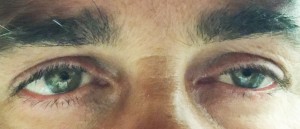
Photokeratitis
What is Photokeratitis?
Photokeratitis is essentially a “sunburn” of the eye. It occurs after the eyes have had prolonged exposure to ultraviolet (UV) light rays. The source of the UV light is typically the sun, a tanning or sterilizing light, or a welding arc. It is prevented by wearing proper sunglasses, goggles, or a mask when there is a risk of exposure.
Symptoms do not begin until 6-12 hours later, so the person does not feel anything during the prolonged period of UV light exposure. Often, one will begin to notice slight eye pain and irritation the evening of exposure, and is awoken in the middle of the night or the next morning with more severe pain, light sensitivity, and blurred vision.
“Snow blindness” is a common term for photokeratitis that skiers or hikers experience after prolonged exposure to bright sun reflecting off the snow or ice, particularly at higher altitudes. “Welder’s burn” or “flash burn” occurs when a welder or someone near a welder is exposed to the welding arc while not protected. Photokeratitis can also occur in boaters and fisherman after prolonged exposure to sunlight reflecting off the water.
 The cornea of the eye is primarily what is damaged by unprotected exposure to UV light. Its surface layer, or corneal epithelium, is affected, and hours after the exposure it begins to break down. The “sunburned eye” develops thousands of tiny micro- corneal abrasions, which leads to the severe eye pain, gritty sensation, and light sensitivity. The condition generally lasts 1-2 days and resolves on its own with no permanent damage as the corneal epithelium regenerates.
The cornea of the eye is primarily what is damaged by unprotected exposure to UV light. Its surface layer, or corneal epithelium, is affected, and hours after the exposure it begins to break down. The “sunburned eye” develops thousands of tiny micro- corneal abrasions, which leads to the severe eye pain, gritty sensation, and light sensitivity. The condition generally lasts 1-2 days and resolves on its own with no permanent damage as the corneal epithelium regenerates.
Treatment of photokeratitis is limited to cold compresses on the eyes and artificial tears. Some pain medicine pills may help.
Prevention is key, particularly since there are no symptoms during the exposure. Always wear UV blocking sunglasses, goggles, or a mask when in a situation at risk for photokeratitis.